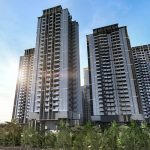152 Ubi Ave 4 industrial land presents a rare opportunity to acquire industrial real estate in Singapore with a long tenure.
The Ubi Ave 4 industrial land also offers a strong tenant covenant and excellent site dynamics.
Table of Contents
- The Ubi Ave 4 industrial land offers long term leaseback with fixed annual escalation of 2.0%: Provision of steady income stream with fixed annual rent increases
- The Ubi Ave 4 industrial land presents strong tenant covenant: The current tenant (a subsidiary of the Vendor) is a SGX Mainboard listed company with focuses that include telecom value-added services, high-end consumer mobility products as well as IT related professional and managed services
- The Ubi Ave 4 industrial land is a rare industrial land with long tenure: Today, industrialists who have been allocated sites by the authorities or acquired them through GLS, generally have a land tenure of 20 to 30 years with no option to extend. This investment offering provides a rare opportunity to acquire an asset that has a longer land tenure
- The Ubi Ave 4 industrial land offers excellent site dynamics: The Property is highly accessible via Pan-Island/ Kallang-Paya Lebar Expressways and within a short distance to Ubi and Tai Seng MRT Stations on the Downtown Line and Circle Line respectively. Situated within existing industrial clusters and with surrounding infrastructure largely developed, the Property enjoys unparalleled site dynamics
- Age/ Condition: Having refurbished in 2011, the Ubi Ave 4 industrial land is relatively new, and has been very well maintained.

The JTC industrial property market statistics showed that overall rents across Singapore’s industrial sector remained unchanged quarter-on-quarter (QOQ) in Q4 2019, the second straight quarter of no-change. For the full year 2019, industrial sector rents were up 0.1% year-on-year (YOY), mainly due to the improvement in business parks.
Commenting on the industrial market performance in the last quarter of 2019, Mr Desmond Sim, CBRE’s Head of Research for Southeast Asia, said, “the factory submarket displayed mixed performances this quarter. The JTC Single-User Factory Rental Index inched up by 0.1% q-o-q, whereas occupancy rate fell by 0.3 percentage points q-o-q to 90.8%, partly because of excess supply from previous quarters which is still in the midst of being absorbed by the market.”
The JTC Multiple-User Factory Rental Index on the other hand eased by 0.1% q-o-q, which can be mainly attributed to the West region where a large pool of existing vacant stock remains; this is despite that the islandwide occupancy rate increased by 0.4 percentage points q-o-q to 87.5%.
Mr Sim added, “The warehouse sector saw an improvement from its slowdown from preceding quarters, with the JTC Warehouse Rental Index edging up by 0.1% q-o-q. However, it was also noted that warehouse occupancy dipped marginally by 0.1 percentage points q-o-q to 88.0%. Nonetheless, it is likely that the tight upcoming warehouse supply will lend support to occupancy.”
CBRE said that moving forward, with overall industrial rents remaining unchanged this quarter, there is some optimism that rents may have bottomed out in the industrial market.
CBRE Research is of the view that warehouse rents are poised to be more resilient, supported by a limited supply pipeline. Meanwhile, factory rents are expected to stay flat in 2020, suppressed by a prevailing vacancy volume of 40.1 million sq ft and a substantial amount of upcoming multiple-user factory stock.
Dominic Peters, Senior Director of Industrial Services at Colliers International, commenting on industrial market said:
“The Singapore manufacturing sector is expected to improve slowly in the coming quarters on the back of a gradual recovery of the global electronics cycle, driven by the normalisation of inventory in the global electronics supply chains, and the adoption of 5G technologies in telecommunication equipment and smartphones. However, with new supply of factory space in 2020 remaining sizable at around 15.6 million sq ft (net) – equivalent to about 4% of current factory stock – we anticipate that overall factory rent will likely remain subdued as supply outstrips demand in 2020.
Warehouse supply is set to increase to 3.6 million sq ft in 2020 (net) – equivalent to about 3% of current warehouse stock. Given the challenging global trade outlook and the elevated vacancy rate of 12.0% at the end of 2019, we expect warehouse rent to remain soft, stabilising in 2020-2021 before recovering from 2022 as supply diminishes.
Meanwhile, we forecast the flight to quality in business park and high-specs segments to continue due to limited supply amid higher demand for premium space. Centrally-located business parks and high-spec buildings with good amenities should attract healthy demand while those older and further away from MRT stations in the suburbs could face more difficulty in finding tenants, despite lower rents. Overall, we expect business park and high-specs rents to see slight upticks in the coming quarters, increasing by 1-2% YOY by the end of 2020.”
Mr Paul Ho, chief mortgage officer at iCompareLoan, said, “commercial properties obviously command more rents than real estate like the Ubi Ave 4 industrial land.”
He added, “any newer industrial properties sitting on Business 1 (B1) zones are increasingly sophisticated and looking like Commercial buildings. In fact you might not even tell them apart unless you refer to the URA Zoning Master Plan. Since industrial B1 zones are better located nearer to housing estates or regional centres and no longer mainly in Jurong, there is substantial advantage to break the zoning rules.”
Mr Ho noted that with the rolling out of the 5G wireless network and with Singapore’s being at the forefront of smart nation initiatives, the industrial market as a whole will remain optimistic.
The industrial property market remains exposed to downside risks in 2020. While there are nascent signs of a turnaround in the manufacturing sector and economic growth is expected to pick up in 2020, this could be derailed by unexpected external events such as the Covid-19 crisis.






